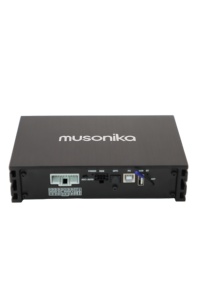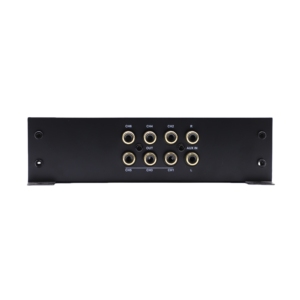
All categories
Featured selections
Trade Assurance
Buyer Central
Help Center
Get the app
Become a supplier

(693 products available)














































A 600-watt power amplifier can be used in many applications, so it is available in different types. It generally strengthens audio signals from low levels to higher wattages for driving speakers with more power. This device is widely used in professional audio systems, home entertainment systems, and car audio systems.
Based on Channels
Power amplifiers are classified into two major categories based on channels: dual-channel power amplifiers and multi-channel power amplifiers. A dual-channel amplifier has two channel outputs to drive two speakers. Two channels may be bridged to provide higher power to a single speaker. Multi-channel amplifiers have more than two channels, with some having up to eight channels. They can drive several speakers simultaneously and are often used in car audio systems.
Based on Design
A 600-watt amplifier can come as a home or portable model. Home power amplifiers are designed to be used in homes or studios and are usually kept at a fixed location. They tend to be larger in size and provide more connectivity options for seamless integration into an audio or home theater system. A 600-watt amplifier for a car, on the other hand, is smaller and more compact. It is designed to operate with the low DC voltage provided by car batteries and fit into the limited spaces inside cars.
Based on Load Impedance
600-watt amplifiers come in different kinds based on the load or speaker impedance they are designed to work with. Variations include models for 4-ohm, 6-ohm, 8-ohm, or higher power handling. A power amplifier for lower impedance speakers will provide higher power output. It is important for users to select an amplifier and speaker combination that are a safe match. Otherwise, the amplifier may work harder, increasing the risk of overheating and damage.
Based on Additional Features
Some amplifiers offer additional features that enhance their performance and versatility. Models with built-in preamplifiers can connect to audio sources directly. There are also amplifiers with built-in crossovers for separating frequency bands for multi-speaker systems. Bluetooth power amplifiers can receive audio signals wirelessly from phones or other devices. They eliminate the need for cables between the audio source and amplifier. PC amplifiers with USB ports allow users to connect sources like laptops and stream audio digitally without quality loss.
One major task of a power amplifier is to increase a weak audio signal so that it can drive the speakers. This job is to take the signal from a device like a CD player or a computer and make it strong enough to power the speakers. If the amplifier fails at this task, there will be no sound at all. Other functions include:
Amplifiers serve many different application areas; the global 600W amplifier market is expected to reach $1 billion by 2031, growing at a CAGR of 8.7%. Apart from recreational music and home sound systems, power amplifiers are increasingly being used in the following sectors:
Broadcasting and Recording Studios
Broadcasters and recording studios require 600-watt power amplifiers to boost signals transmitted to antennas and to drive studio monitors and PA systems, respectively.
Musical Instruments
Guitar and bass players use 600-watt amplifiers to achieve loud volumes and headroom to control dynamic peaks.
Public Address Systems
They are used for large venues such as arenas, auditoriums, and stadiums for voice and sound reproduction for events, concerts, and corporate presentations.
Home Theater Systems
Amp users enhance their home theater systems by integrating a 600W amplifier to improve movie soundtracks and music for a more immersive experience.
Industrial and Scientific Applications
Laser cutting and scientific research require power amplifiers to enhance signal strength in long-range communication systems such as RF.
Applications and Speaker Compatibility:
When selecting a 600W power amplifier, the first step is to identify the application. Whether it is for home use, studio recording, or live sound reinforcement, there's a suitable amplifier designed for the purpose. For instance, DIY car amplifiers can be used for in-car entertainment. Consider the speakers' impedance and power handling capacity. A 600W amplifier works well with speakers that can handle near that power level, but only some of that capacity will be used if the speakers have a lower rating. Typically, speakers with a 600W capacity will have an impedance of 4 or 8 ohms. A lower impedance speaker will draw more power from the amp than a higher one.
Understanding RMS and Peak Power:
It's crucial to distinguish between an amplifier's peak power output and its effective continuous power output (RMS). Peak power is the maximum power an amp can produce in short bursts, while RMS is the power level an amplifier can supply consistently without straining. Look at the RMS power output when analyzing an amp. That's the real power level to consider. A 600W RMS amp can drive speakers rated for 600W without risk if one assumes equal distribution of power to 4- and 8-ohm speakers. However, other factors like distortion and efficiency should be considered.
Account for Efficiency and Distortion:
Amps don't convert all the power they draw into audio output. Some power is lost as heat. Most amps are 50-80% efficient. A 600W amp may only produce around 480W of usable power. Look at the amplifier's efficiency rating to know how much power it will realistically deliver. Efficiency can affect how loud an amplifier gets and the size of the speakers needed. Consider total harmonic distortion (THD) as well. THD measures how much the sound quality is distorted. Lower THD values mean better sound quality. Check these ratings to learn more about an amp's actual power production and sound quality.
Features and Connectivities:
Investigating the amplifier's inputs and outputs is crucial. Does it have the connections for the sources and speakers? Also, consider the features it offers. Some amplifiers have built-in crossovers to send different frequencies to subwoofers and tweeters. Electronic toys like phones, computers, and streaming music players will connect better to an amp with digital inputs like optical and coaxial connections. Bluetooth and Wi-Fi let devices connect wirelessly. Frequency knobs adjust bass and treble. Volume and balance controls help set levels. Protection circuits prevent distortion that could damage speakers. Knowing what connections and extras an amp has will help choose the right one for that setup.
Q1: What speakers will a 600-watt amplifier work with?
A1: The amplifier is compatible with speakers that can handle its power output. When picking speakers for a 600-watt amplifier, consider their RMS wattage capacity and sensitivity. Seek speakers with an RMS power capacity of at least 100 watts and a sensitivity rating above 88 dB.
Q2: Can a 600-watt amplifier damage speakers?
A2: Yes, a 600-watt amp can potentially damage speakers, but only under specific conditions. If the amp's power is more than the speakers' maximum capacity, it could harm them. Secondly, if the amp is not adjusted properly, it can send distorted signals that may damage the speakers.
Q3: How to ensure a 600-watt amplifier produces good sound?
A3: To enjoy good sound, connect the amplifier to speakers and audio sources compatible with its power capacity. Secondly, use cables with quality shielding to eliminate any noise or static. Lastly, install the amp in a well-ventilated space to avoid overheating.
Q4: What is the difference between a class D and class AB amplifier?
A4: Class AB amplifiers are renowned for producing excellent sound, but they are larger and less efficient than class D amps. On the other hand, class D amps are more compact, efficient, and cost-effective. However, they may sacrifice sound quality.